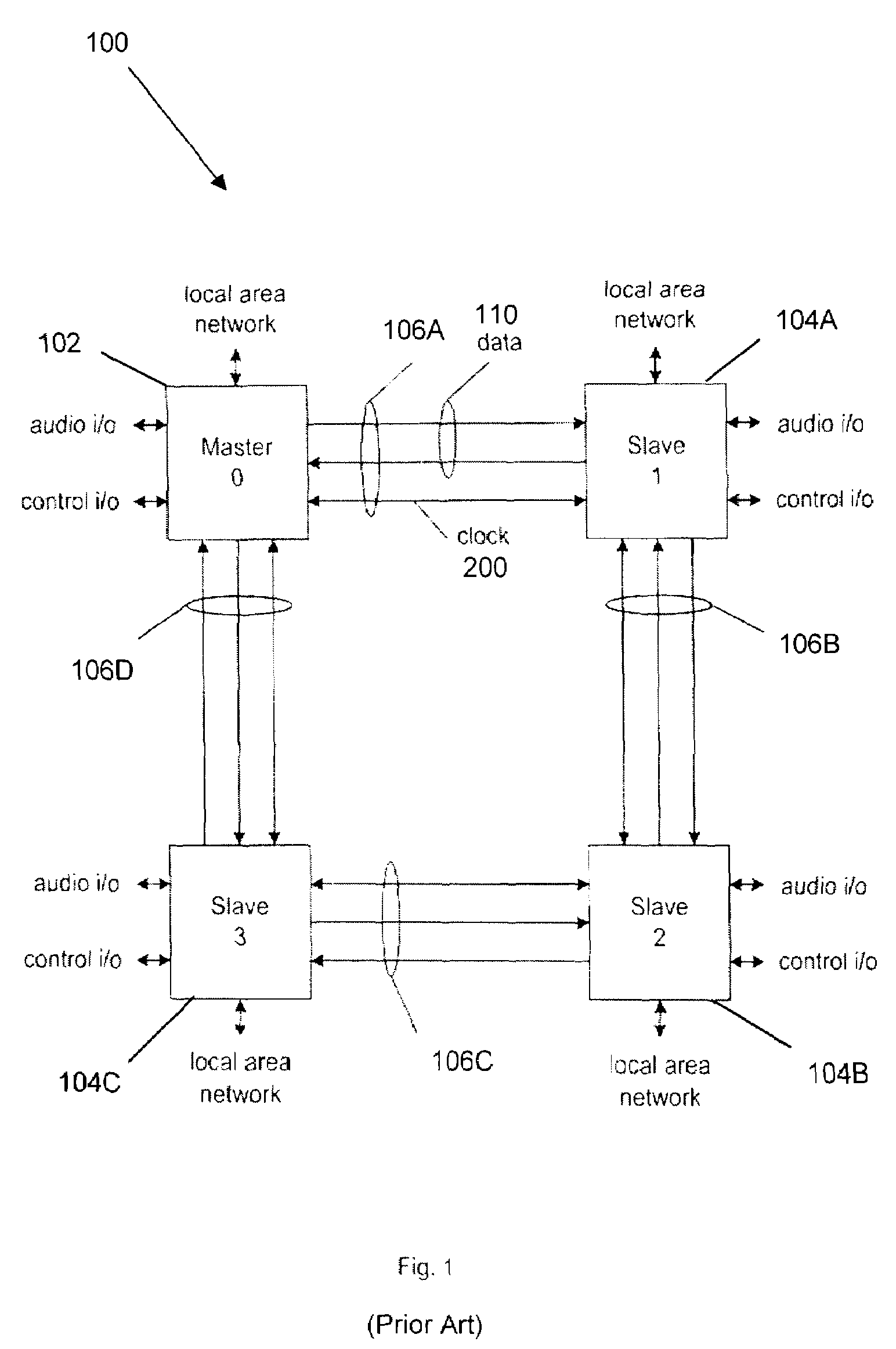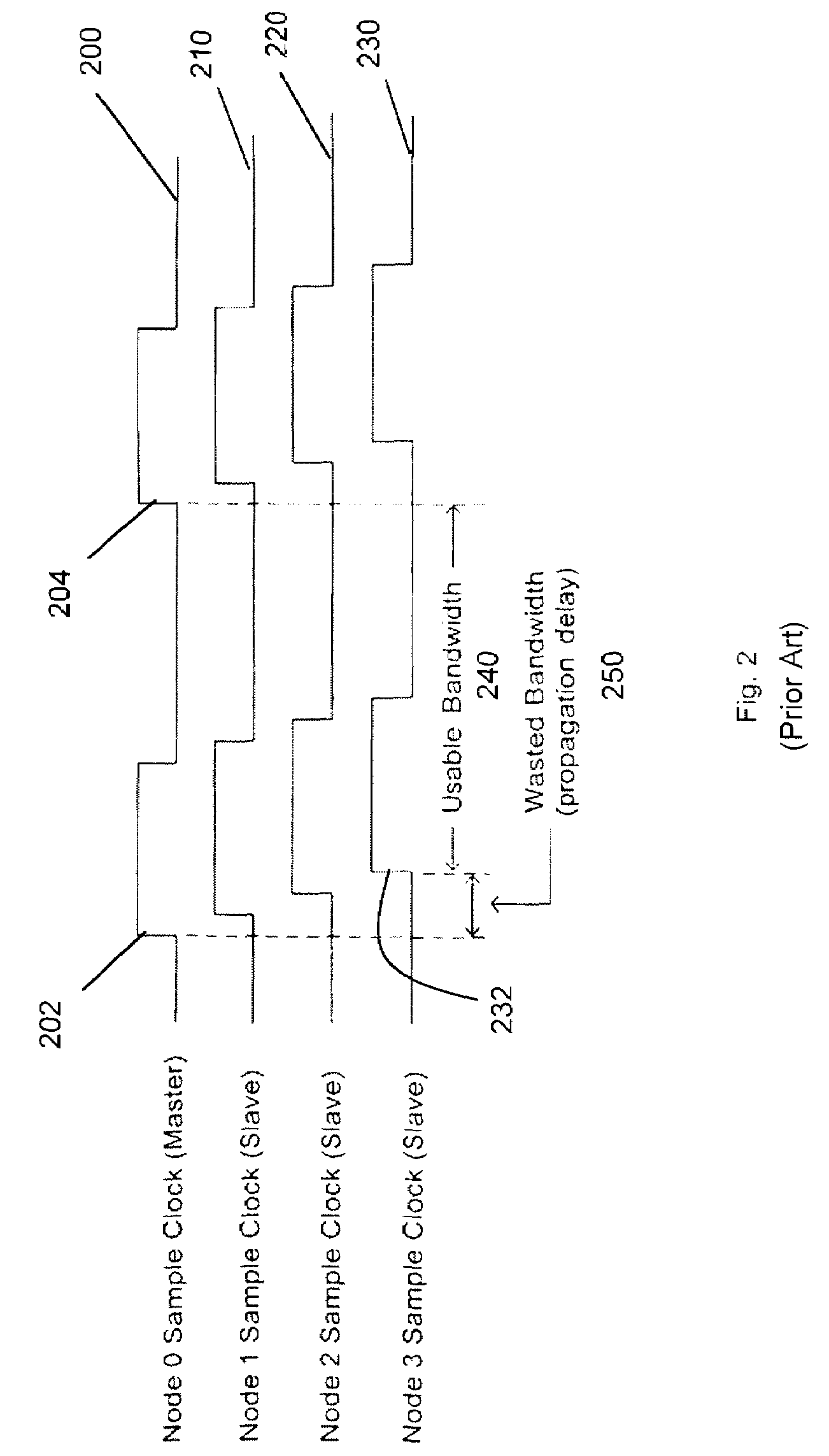Bandwidth optimization of ring topology through propagation delay compensation
a technology of propagation delay compensation and ring topology, applied in the field of ring topology digital networks, to achieve the effect of improving clock synchronization and reducing bandwidth loss
- Summary
- Abstract
- Description
- Claims
- Application Information
AI Technical Summary
Benefits of technology
Problems solved by technology
Method used
Image
Examples
Embodiment Construction
[0018]The process of the present invention will be described with reference to FIGS. 3A-3D and the flow chart of FIG. 4. First, the total ring propagation delay is determined. The master node 102 transmits a clock signal into the network in one direction (FIG. 3A, step 400). Each slave node 104A, 104B and 104C propagates the signal to the next slave node without regeneration (step 402) until the signal is received by the master node 102 (step 404). The amount of time diff0 the signal takes to travel around the ring, based on the signal's time of transmission from the master node 102 and time of arrival at the master node 102, is measured (step 406).
[0019]The master node 102 then transmits a clock signal in both directions to the first slave node 104A (FIG. 3B, step 408). The first slave node 104A receives both signals (step 410) and measures the difference in the two signals' arrival times diff1 (step 412). The process is repeated for each other slave node (FIGS. 3C and 3D, step 414...
PUM
 Login to View More
Login to View More Abstract
Description
Claims
Application Information
 Login to View More
Login to View More - R&D
- Intellectual Property
- Life Sciences
- Materials
- Tech Scout
- Unparalleled Data Quality
- Higher Quality Content
- 60% Fewer Hallucinations
Browse by: Latest US Patents, China's latest patents, Technical Efficacy Thesaurus, Application Domain, Technology Topic, Popular Technical Reports.
© 2025 PatSnap. All rights reserved.Legal|Privacy policy|Modern Slavery Act Transparency Statement|Sitemap|About US| Contact US: help@patsnap.com



